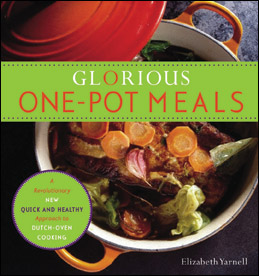Today we have a guest blogger, Kelly Kilpatrick, who writes about food and health primarily for nurses. I’m glad to be able to share other voices in this space and hope you enjoy the change.
* Note: the views expressed in the following article may not necessarily reflect the views of the author of this blog.
Get a Double Scoop of Taste and Health
We’re a race that lives to eat as opposed to eating because we need sustenance to live, which is why we’re beset by lifestyle diseases like cancer, diabetes and cardiac ailments. Unlike our ancestors who had limited food options, we’re spoiled for choice today – from the different kinds of cuisines to the various ways to cook the same kind of food, we have a staggering array to choose from. And more often that not, we choose the wrong kinds of food, because they’re the ones that taste better – or so we think!
Most people avoid going on a diet because of the love affair they have with their taste buds – these small sensors take priority over all health issues and must be satiated at all costs. To eat healthy in their book is to eat bland, tasteless food. But that’s not the truth; here are a few tricks and tips that show you how to eat healthy and have a great-tasting meal. So now you can have your cake and eat it too!
 • Cook your own food: The reason why most healthy or diet foods taste bland is that they’re frozen or readymade. Buy natural, healthy and fresh ingredients and use herbs and spices to make your food tastier. When you cook your own food, you retain control over how much fat or oil you add to the finished product.
• Cook your own food: The reason why most healthy or diet foods taste bland is that they’re frozen or readymade. Buy natural, healthy and fresh ingredients and use herbs and spices to make your food tastier. When you cook your own food, you retain control over how much fat or oil you add to the finished product.
(EY: This is a great point! And don’t forget that Glorious One-Pot Meals: A Revolutionary New Quick and Healthy Approach to Dutch-Oven Cooking offers you a new tool in your pantry for cooking healthy meals! The cookbook comes out January 6th, 2009, but save $5 by pre-ordering yours today!)
• Use unsaturated oils: Saturated fats like those in coconut oil, palm oil, butter and margarine up your cholesterol levels and are bad for your heart. You’re better off using unsaturated fats (monounsaturated or polyunsaturated) like those in olive oil, sunflower oil, groundnut oil, corn oil, soy oil and cottonseed oil.
• Substitute two egg whites instead of one whole egg: Eggs are a rich source of protein, but their yolks are also packed with cholesterol. If you must have your eggs, both at the breakfast table and in your cakes, substitute two egg whites in place of one whole egg. By eliminating the cholesterol and keeping the protein, you’re making a healthy choice. And for those who swear that the yolk is the tasty part of the egg, try an omelet made with chopped vegetables, onions and two egg whites beaten well – you’ll change your mind.
• Low fat substitutes: Ice creams and butter tickle the taste buds and leave them wanting more. But your insides scream with the fat content that’s being poured in; so the best healthy alternative is to look for low-fat substitutes that are free of trans fats. Read the labels carefully before you pick up these items at your supermarket.
• Fruits for desserts: If you crave something sweet after meals, dip your hands into the fruit basket rather than reach for the cake platter or ice cream carton. Besides not adding on the pounds, fruits contain a ton of vitamins and nutrients that are beneficial to overall health
This post was contributed by Kelly Kilpatrick. She invites your feedback at kellykilpatrick24 at gmail dot com. Please leave comments here, too.

